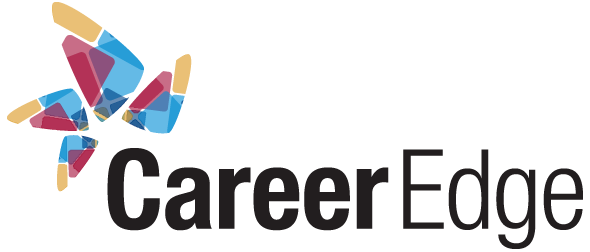Maintaining mental health in the workplace is an essential component of business success. Employees with sound mental health tend to be more productive, focused, and engaged in their work.
According to the Canadian Mental Health Association, one in five adults experiences a mental health diagnosis each year. A variety of factors, including trauma, stress and anxiety, can cause this.
While mental health is a topic often overlooked in the workplace, businesses need to understand how to recognize signs of mental health problems in their employees and provide support when needed. By doing so, companies can ensure that their employees remain healthy and productive while contributing to a positive work environment.
Benefits Of A Mentally Healthy Workforce
Employees with poor mental health often have difficulty completing tasks in the workplace. They may be less productive and exhibit diminished interest in their work. Workplace injuries and accidents caused by the inability to focus due to stress can also grow in numbers because of stress and mental health issues.
Promoting mental health in the workplace can be beneficial for both employers and employees. It makes economic sense because it can result in the following:
- Increased productivity rates
- Lower rates of absenteeism
- higher-quality work and creativity
- Improved employee engagement
- Better relationships between employees and leadership
- Improved relationships with the clients
- Increased inclusiveness
How To Promote Mental Health In The Workplace
A healthy work environment should give employees the resources they need to feel supported, such as access to mental health professionals, flexible hours, and clear communication channels. It should also promote an open dialogue between employers and employees, allowing them to discuss issues openly without fear of retribution or judgment.
By implementing these activities, companies can help employees manage stress, build resilience, and create a workplace culture of support and understanding. This will enable employees to be more productive and engaged while improving overall job satisfaction.
1. Create Health and Safety Workplace Guidelines
Developing a healthy workplace environment is a multi-step process that begins with establishing and enforcing policies and practices that prevent, identify, support and rehabilitate employees who experience distress, burnout, substance abuse or other mental health concerns.
2. Make Mental Health Services Accessible
The World Health Organization has found that every dollar invested in mental health treatment returns $4 in improved health and productivity. That means that investing in your employees’ mental health can have a significant return on investment.
You are responsible for your employees’ mental health as a business owner.
It’s about more than just providing access to the proper care and support—it’s also about making sure that they know how important it is to take care of themselves.
Your team will be more productive if they feel healthy and well-rested, so it makes sense that investing in their mental health can help you make more money!
3. Encourage Employees to Take Time Off
Taking days off can be more difficult for some jobs/organizations than others. Encouraging employees to take days off and making the process easier will prevent burnout.
For example, consider adding mental health days or letting employees know that sick time can be used when they are “sick.” If your policies demand a doctor’s note for an absence. For example, that could create additional challenges for employees who may be fearful of the stigma surrounding mental health issues.
4. Build a Positive Work Environment
Creating a positive work environment is a great way to improve mental health in the workplace. Here are ways you can implement to improve the workplace environment.
- Conducting regular check-ins
- Prioritizing onboarding new hires
- Developing a solid workplace culture
- Understanding that every employee has different accommodations and needs. For example, some employees would require a different work environment to focus
- Encouraging team collaboration and team-building activities
- Normalizing conversations about mental health within the workplace
- Creating a work environment that encourages open and honest communication
- Understanding how to identify and prevent potential workplace-related emotional triggers
- Promoting work-life balance by implementing flexible schedules and work-from-home opportunities
5. Take Steps to Support Diverse Employee Groups
People from minority or diverse groups are statistically shown to experience mental health symptoms at higher rates and face more barriers when seeking mental health.
Taking steps to acknowledge diverse groups and support them in the workplace is essential to achieve mental health equity for the overall mental health of the workplace.
6. Offer Flexibility
Rigidity can have a negative impact on mental health at work by increasing stress on your team. Finding ways to make employment more flexible can significantly improve workplace mental health. Some opportunities to make working for your organization more flexible include:
- Offering virtual or hybrid is the new normal
- Making project deadlines more flexible
- Adopting the right to disconnect policy
- Instituting days with no meetings
- Checking in with employees about their preferred working style and accommodating positions to suit them
Employers should make sure that they are providing resources and support for their employees when it comes to mental health. Some ways to promote it include giving access to counselling services, offering flexible working hours, or simply creating an open dialogue where employees feel comfortable discussing their struggles. Taking these steps will benefit not only the individual but also the organization as a whole.
FAQ
Q: What are the signs that workplace mental health is becoming an issue?
A: Common signs include decreased productivity, increased absenteeism, difficulty concentrating, irritability, withdrawal from colleagues, missed deadlines, and changes in work quality. Physical symptoms like fatigue, headaches, or frequent illness may also indicate stress-related mental health concerns.
Q: What percentage of workplace issues are related to mental health?
A: According to the Canadian Mental Health Association, one in five adults experiences a mental health diagnosis each year. Mental health conditions significantly impact workplace productivity, with studies showing that untreated mental health issues can reduce productivity by 35%.
Q: What are reasonable accommodations for mental health conditions?
A: Common accommodations include flexible work schedules, remote work options, modified break schedules, quiet workspaces, adjusted deadlines, reduced distractions, access to natural light, and permission to attend medical appointments during work hours.
Q: How can I support a coworker who seems to be struggling with mental health?
A: Be a good listener without trying to diagnose or fix their problems. Offer practical support, respect their boundaries, encourage them to seek professional help if appropriate, and maintain confidentiality. Small gestures like checking in regularly can make a significant difference.
Q: What are the most common workplace stressors that affect mental health?
A: Common stressors include heavy workloads, tight deadlines, lack of control over work, poor work-life balance, inadequate resources, unclear expectations, conflict with colleagues or supervisors, job insecurity, and lack of recognition or advancement opportunities.
Remember, seeking help for mental health concerns is a sign of strength, not weakness. If you’re struggling, don’t hesitate to reach out to mental health professionals, trusted colleagues, or workplace support systems. Your mental health matters, and support is available.
This is a part of #BellLetsTalkDay, an initiative launched by BELL, one of Career Edge’s partners. For more mental health resources, visit this website.






